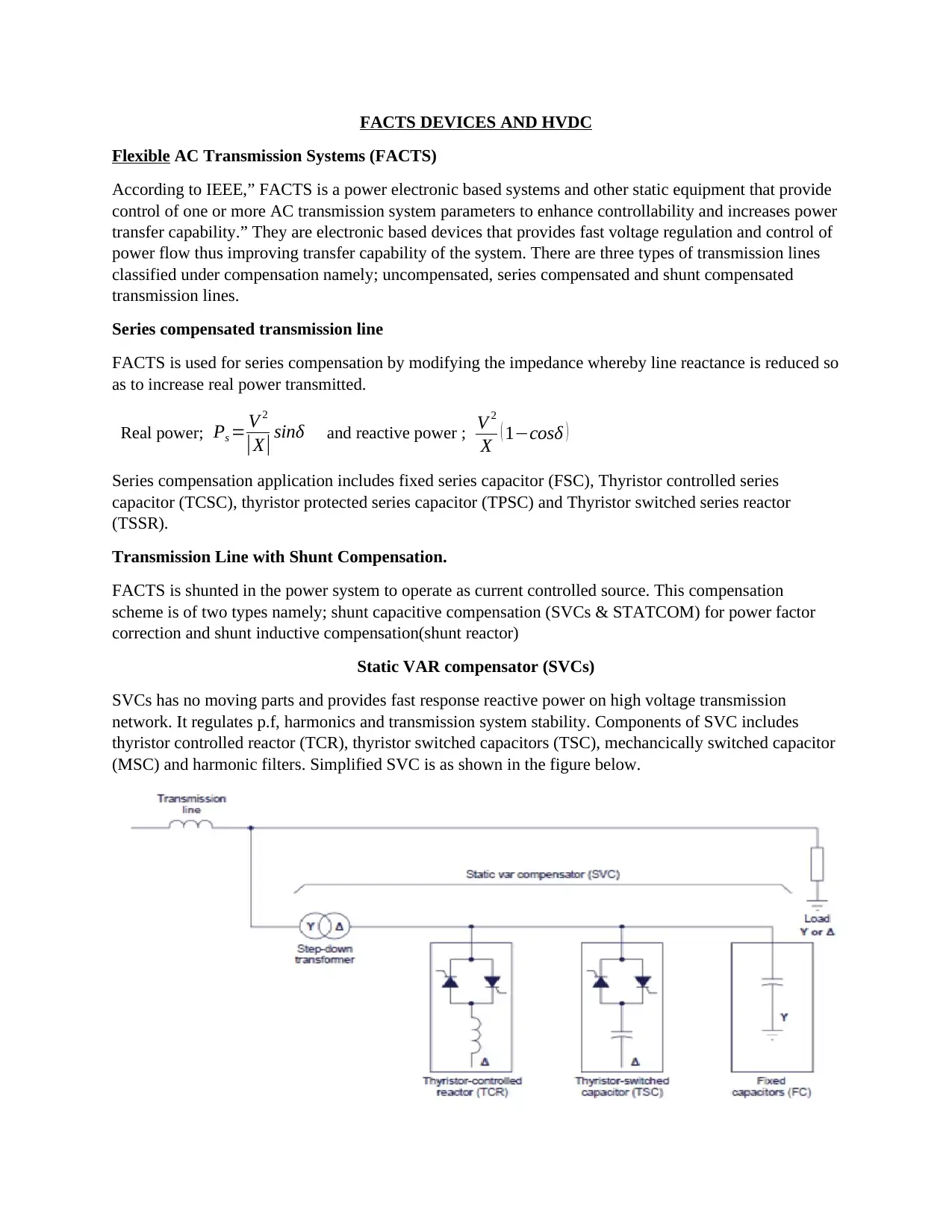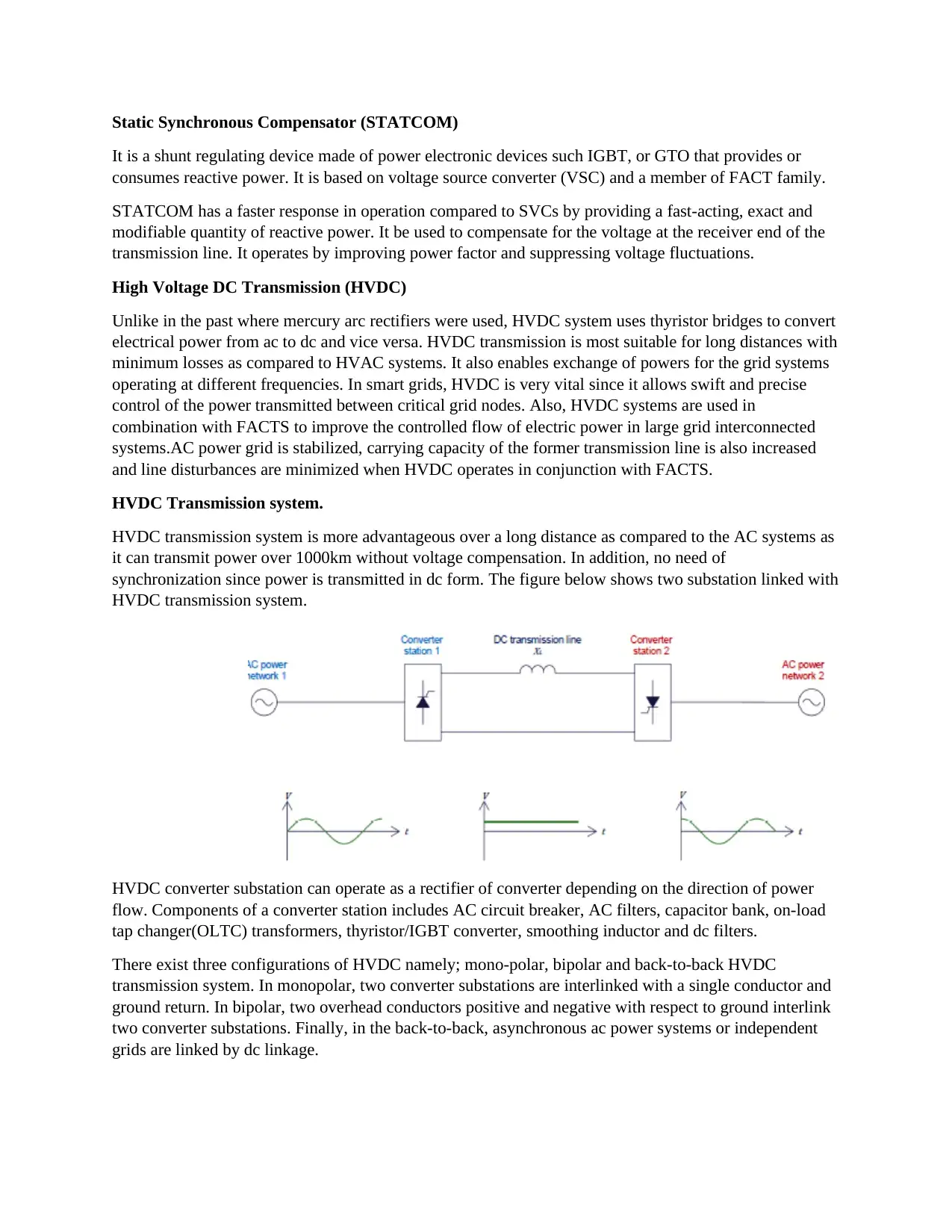Advanced Technologies in Power Transmission: FACTS and HVDC
VerifiedAdded on 2022/11/18
|3
|699
|214
Report
AI Summary
This report provides a comprehensive overview of Flexible AC Transmission Systems (FACTS) and High Voltage DC (HVDC) transmission systems. It begins by defining FACTS and its role in enhancing power system controllability and increasing power transfer capability, including a discussion of series and shunt compensation. The report details various FACTS devices such as SVCs (Static VAR Compensators) and STATCOMs (Static Synchronous Compensators), explaining their functions in voltage regulation and power factor correction. It also covers HVDC transmission, highlighting its advantages for long-distance power transmission, including its use in smart grids and in conjunction with FACTS. The report explains the components of HVDC converter stations and describes the different configurations of HVDC systems (monopolar, bipolar, and back-to-back). The report emphasizes the importance of these technologies in modern power systems, improving grid stability, increasing transmission capacity, and minimizing line disturbances.
1 out of 3










![[object Object]](/_next/static/media/star-bottom.7253800d.svg)